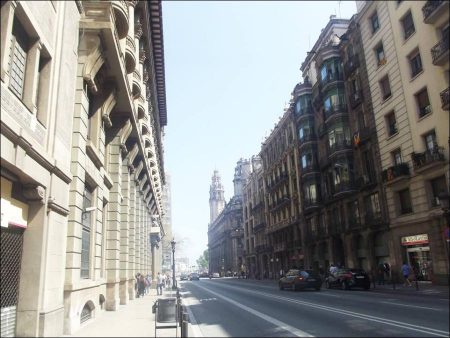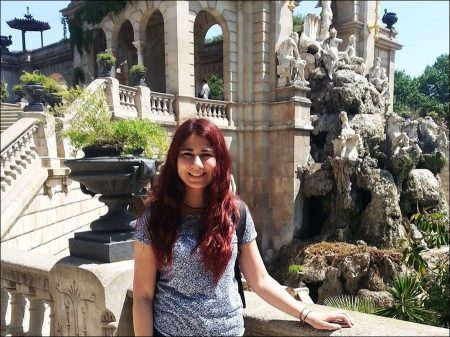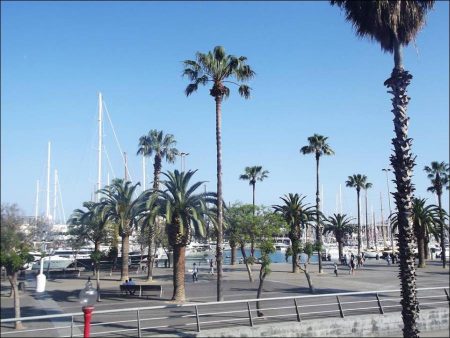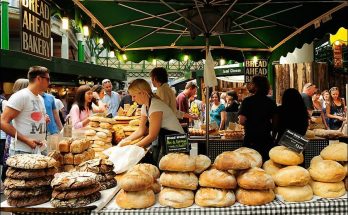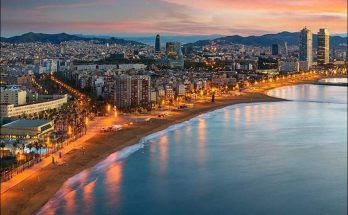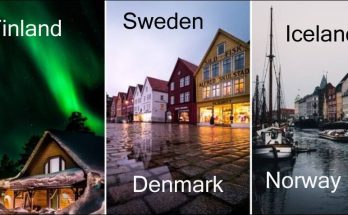Barcelona is the most prosperous and cosmopolitan city in Spain. A replica of Columbus’ ship is in the harbor. Its most picturesque aspect is seen in the old Gothic quarter around the 14th century Cathedral. Midday sundays the traditional local dance, the sardana, is performed in front of the cathedral.
Close by are the Palacio de la Diputacion, seat of the ancient parliament of catalonia, the Ayuntamiento, and many other attractive old palaces and mansions. Barcelona’s 19th century architect, Gaudi, produced the large, but still unfinished Church of La Sagrada Familia, the weird structural decorative designs of which characterize Gaudi’s other major works, the two animal shaped houses in the Paseo de Gracia, his playground at Parque Guell and the Guell Palace (Museum of spanish Theater). A funicular rises to Montjuich Park, where the Palacio Nacional houses the Museum of Catalan art with primitive structed Spanish village.
Folk art is made and sold at the Pueblo and in summer there are folklore evenings. The Museum of Modern Art in the Parque de la Ciudadela has some of Salvador Dali’s works and Picasso is on show in his museum on calle Moncada. The Museo Taurino, in the Plaza de Torros, is a bullfighting museum. The Plaza de Cataluna is the city center. Barcelona’s major festival is Nuestra Senora de la Merced, celebrated 20-24 September.
The main excursion is to the mountain monastery of Monserrat, founded in 880 AD. The two prides of Montserrat are the Black Virgin, reputedly carved by St Luke, and Escolania, a children’s choir with a 700 year old history. The museum in the village contains works by El greco, Caravaggio and Corrigio.
Main Sights
The Barri Gòtic (Catalan for “Gothic Quarter”) is the center of the old city of Barcelona. Many of the buildings date from medieval times, some from as far back as the Roman settlement of Barcelona. Catalan modernista architecture (related to the movement known as Art Nouveau in the rest of Europe), developed between 1885 and 1950 and left an important legacy in Barcelona. Several of these buildings are World Heritage Sites. Especially remarkable is the work of architect Antoni Gaudí, which can be seen throughout the city. His best-known work is the immense but still unfinished church of the Sagrada Família, which has been under construction since 1882, and is still financed by private donations. As of 2007, completion is planned for 2026.
Barcelona was also home to Mies van der Rohe’s Barcelona Pavilion. Designed in 1929 for the International Exposition for Germany, it is an iconic building that came to symbolize modern architecture as the embodiment of van der Rohe’s aphorisms “less is more” and “God is in the details.” The Barcelona pavilion was intended as a temporary structure, and was torn down in 1930 less than a year after it was constructed. A modern re-creation by Spanish architects now stands in Barcelona, however, constructed in 1986.
Barcelona won the 1999 RIBA Royal Gold Medal for its architecture,[56] the first (and as of 2015, only) time that the winner has been a city, and not an individual architect.
Visits: 189
